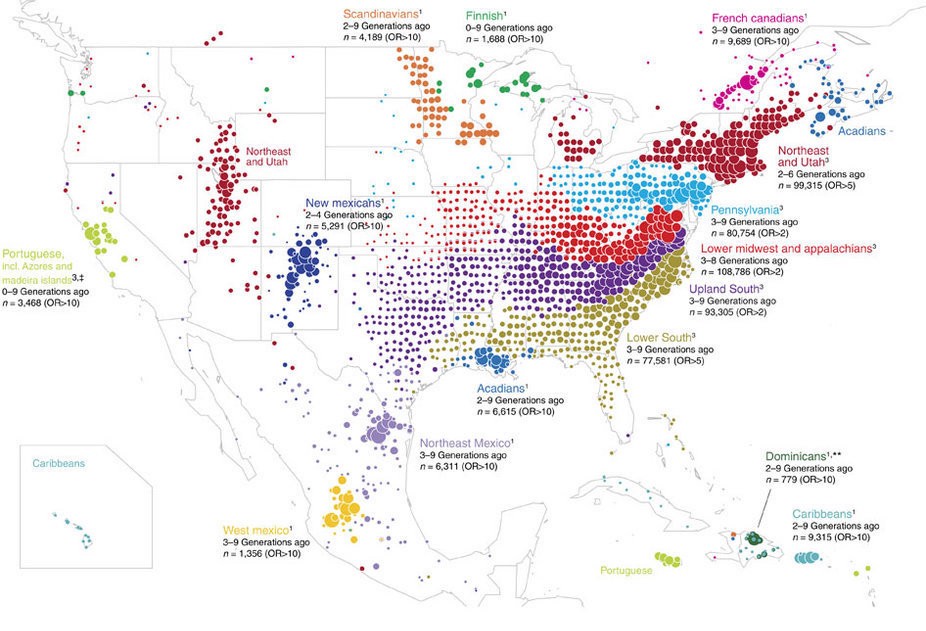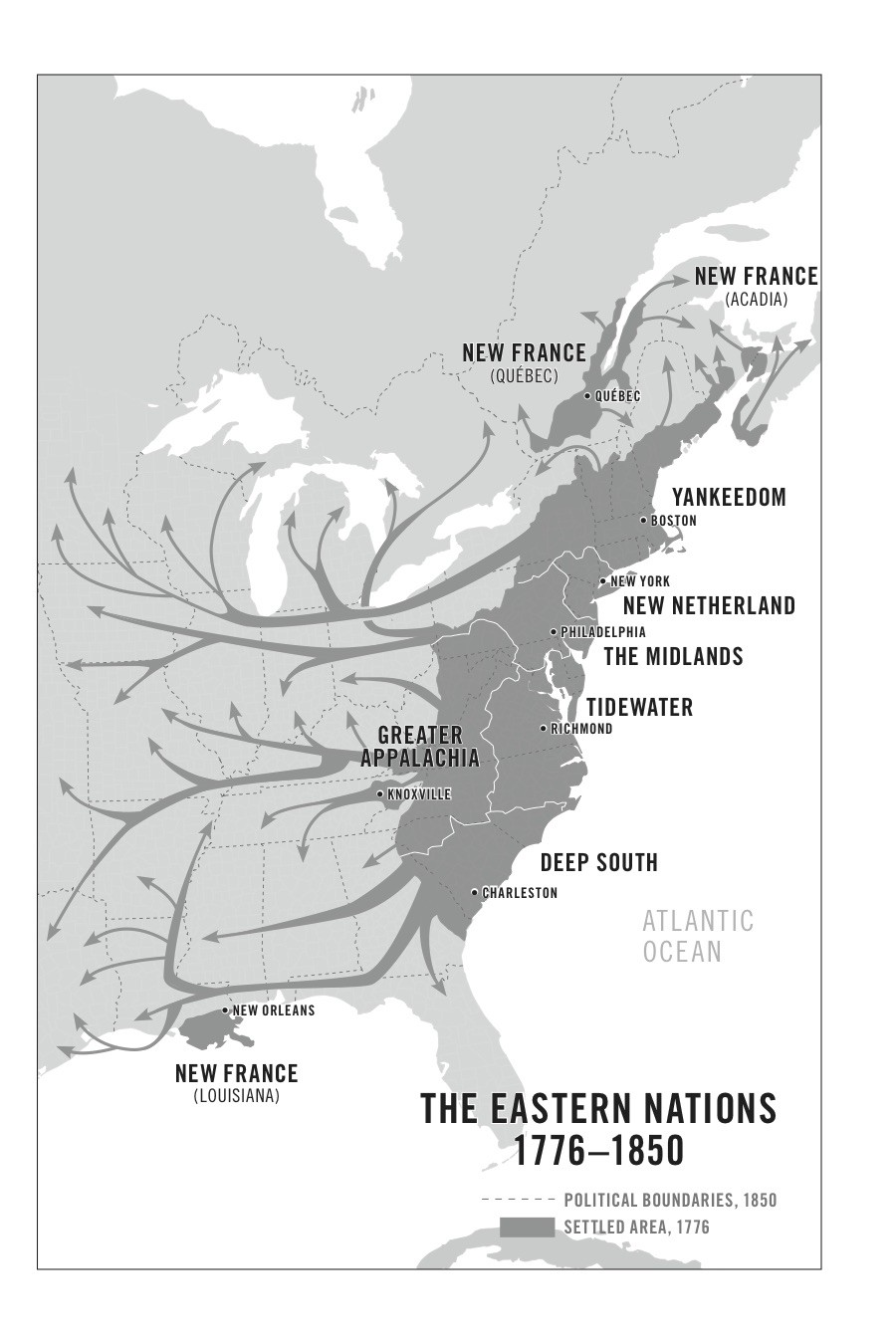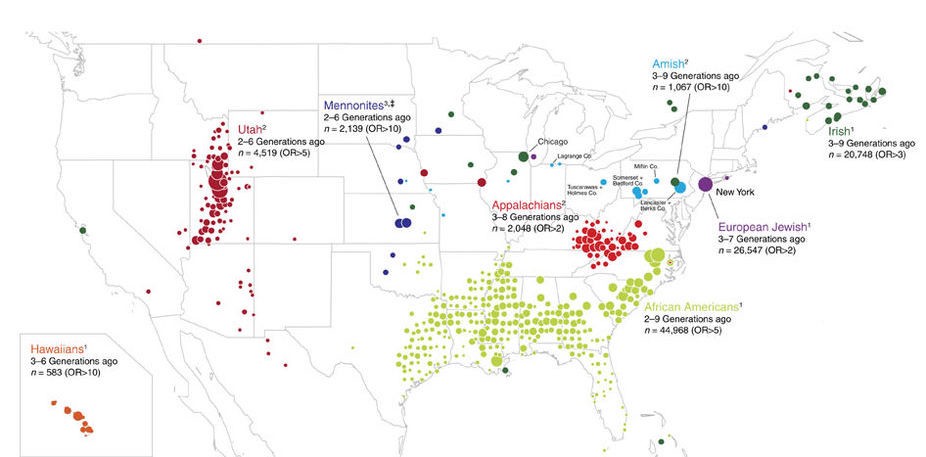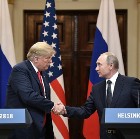Balkanized America
The 11 Nations of America, as Told by DNA
North America was settled by what were, in effect, separate nations ? and the proof may reach right into your DNA
Colin Woodard / Tufts Magazine
Listen to this story
–:–
–:–
Earlier this summer, I presented the American Nations: the eleven regional cultures that comprise the United States and North America. Their existence explains much about our history, our constitutional arrangements, and, indeed, our political fissures ? past and present. If you have any ancestors who were living in North America prior to the Civil War, the existence of these rival nations is likely reflected in parts of your family tree and, according to a recent study published in Nature Communications, may very well have left a mark on your DNA.
I couldn?t miss this study, because shortly after it came out, readers of my 2011 book, American Nations: A History of the Eleven Rival Regional Cultures of North America, were stuffing my inbox and flooding my social media feeds with it. A glance at the thumbnail illustration that accompanied the study made it clear why: Unbeknownst to the scientists who?d written the paper, the map depicting the key results of their research on the patterns of genetic variation in North America over time and space mirrored the American Nations map to an uncanny degree.
Here they are for comparison:
 From Han, E. et al. Clustering of 770,000 genomes reveals post-colonial population structure of North america. Nature Communications 8 (2017)
From Han, E. et al. Clustering of 770,000 genomes reveals post-colonial population structure of North america. Nature Communications 8 (2017)
This is remarkable because the American Nations paradigm is resolutely not about genetics or genealogy. Rather, it?s built on the late cultural geographer Wilbur Zelinsky?s Doctrine of First Effective Settlement, which argues that when a ?new? society is settled, the cultural characteristics of the initial settlement group will have a lasting and outsized effect on the future trajectory of that society ? even if their numbers were very small and those of later immigrants of different origins were very large. These lasting characteristics, which inform the dominant culture of entire regions of North America, are passed down culturally, not genetically, which explains why the Dutch-settled area around New York City still has obvious and distinct characteristics inherited from Golden Age Amsterdam, even though the portion of people there reporting Dutch ancestry to census takers is a vanishingly small 0.2 percent. Culture is learned, not inherited.
And yet the Nature study ? powered by the enormous cross-referenced genomics and genealogy databases of Ancestry.com ? reveals that the regional cultures have left a significant genetic imprint as well. That?s because members of a regional culture tended to mate with one another, rather than with people from rival areas, even when those rivals lived nearby, in the very same colony or state.
?Who we are today ? the genetics of Americans all over the place ? is the result of all kinds of cycles of reproductive isolation and the release of that isolation,? says Catherine A. Ball, a geneticist and the chief scientific officer at Ancestry who oversees the company?s DNA work. ?Who your mates would be was linked to geography, politics, religion, war, and all of that is showing today in people walking on the streets and who they are related to.?
Ball wasn?t familiar with American Nations before I spoke with her, but the results show that the boundaries of the regional cultures were very real when it came to human reproduction, creating reproductive clusters centuries ago that geneticists have been able to recreate through the examination of nearly a million living Americans? DNA.
The Ancestry team, led by Eunjung Han, built their map without reference to culture, geography, or history. Rather, they worked with a database of the DNA of 770,000 people worldwide who asked the company (or its predecessors) to sequence their genes and gave permission to use it for scientific research. Almost all of those people were Americans; the company is based in San Francisco and Utah and devoted most of its marketing dollars to the mail-in Ancestry DNA genetics kits in the United States. (Utahns are slightly overrepresented because the database started its life at Brigham Young University, and its students provided many of the initial samples.) There was no screening by citizenship, ethnicity, race, gender, or anything else, apart from a willingness to pay for the $99 test. ?The only criteria for inclusion into this network was that you spit into a tube, gave me your DNA, and consented to be part of research,? notes Ball.
Via computers, the researchers built a network showing genetic connections between all the people in the database, searching for and isolating clusters ? constellations, if you will ? of more closely related people. Because most of the participants had also created genealogies on the company?s websites, the researchers were then able to cross-reference their clusters with the actual birthplaces of each individual?s ancestors, going back several ? sometimes 10 or more ? generations. The genetic clusters often corresponded with geographic clusters as researchers went back in time several generations, revealing the reproductive geography of the given cluster.
The maps you see above ? and dozens of others in the Nature Communications article and its supplementary materials ? generally show ancestral birthplace location clusters for people born between the 1640s and the late 1880s ? a period that captures significant immigration waves but focuses on a time before North Americans became highly mobile. ?Our hypothesis was that where I live today is not going to tell us a lot about my genetics, but where my ancestors were living 200 or 300 years ago, that will tell us something,? says Ball.
Their top-level map reveals that almost all major reproductive clusters correspond almost exactly to American Nations boundaries, including those mirroring Yankeedom (which the researchers term ?Northeast and Utah?), Midlands (?Pennsylvania?), and Deep South (?Lower South?). Three other nations are plotted but are shown to have two distinct clusters: New France (divided, not surprisingly, between settlers with origins in Quebec and settlers with origins in Acadia); El Norte (where, again unsurprisingly, the 17th-century Nuevomexicanos are distinguished from the 18th- and 19th-century ?Northeast Mexico? wave); and Greater Appalachia, where the Appalachian Mountains split settlers into a northern and southern tier ? what the Ancestry team terms ?Upland South? and ?Lower Midwest and Appalachians.? Significantly, the original home turfs of two smaller nations the study didn?t track ? New Netherland and Tidewater ? are blank on the map, indicating reproductive isolation from the larger cultures they did map here.
 From Colin Woodard, American Nations: A History of the Eleven Rival Regional Cultures of North America (2011).
From Colin Woodard, American Nations: A History of the Eleven Rival Regional Cultures of North America (2011). From Colin Woodard, American Nations: A History of the Eleven Rival Regional Cultures of North America (2011).
From Colin Woodard, American Nations: A History of the Eleven Rival Regional Cultures of North America (2011).
I wouldn?t have expected research based on the genetic sequence of today?s Americans to support my assertions that eastern Oklahoma and the Texas Hill Country are part of Greater Appalachia, that Michigan is part of Yankee Greater New England, that southern Louisiana and the river counties are New France, or that central Florida belongs (or at least belonged) to the Deep South, but there they are, plotted on a map created via an entirely different and unrelated methodology.
![]()
Other more subtle assertions in American Nations are substantiated as well. The book describes how Scandinavian immigrants were attracted to the Yankee frontier ? and embraced by the region?s cultural elites ? partly because of shared cultural traits. Ancestry?s research confirms their clustering in the Yankee portions (and only the Yankee portions) of northern Iowa and the easternmost Dakotas. The book shows that the Deep South?s cultural and sociopolitical origins tie back to the English slave state of Barbados. The genetics researchers identified an African-American cluster encompassing the Deep South and former British possessions in the Caribbean (including the Bahamas, Barbados, Jamaica, the Leeward Islands, St. Lucia, and Grenada), but not Spanish Caribbean possessions (like Cuba, Puerto Rico, or the Dominican Republic). (An important point: It?s almost impossible for descendants of enslaved people to track their ancestor?s genealogies, which is why the Ancestry data for this cluster sadly doesn?t track back to the African continent.) Conversely, the cluster of people with roots in the Spanish Caribbean avoided the Deep South entirely, settling in the Midlands and New Netherland instead, despite the greater physical and environmental differences at play.
 From Han, E. et al. Clustering of 770,000 genomes reveals post-colonial population structure of North america. Nature Communications 8 (2017)
From Han, E. et al. Clustering of 770,000 genomes reveals post-colonial population structure of North america. Nature Communications 8 (2017)
Note that while both Tidewater and the Deep South were slave societies ? ones where slavery was the central organizing principle of the economy and social order ? the cluster researchers have labeled ?African-American? comprises only the Deep South. (In fact, it follows my Deep South borders with eerie precision, including those that split Arkansas in half and divide the area around Memphis from the rest of (Appalachian) Tennessee.) But it doesn?t extend into Tidewater, save for parts of eastern North Carolina, suggesting less commerce in slaves between the regions than I would have expected. (Somewhere in the Ancestry data, there?s presumably another less-robust cluster centered on the Chesapeake that corresponds to Tidewater African-Americans, but it didn?t make it into the published results.)
The researchers, who included computational experts from the University of Michigan and Carnegie Mellon and an African-American history expert at Harvard, also traced reproductive clusters in the lowlands of Alabama and Mississippi back to their colonial-era origins on the coast of South Carolina, just as American Nations would have predicted, as this is where the Deep South spread from. The ancestors of their Quebecois and Acadian cluster members were both found to be concentrated along the Bay of Biscay and the English Channel coasts of France, with few linking back to Paris, the south, or west, corresponding with historical research. The reproductive clusters of the two halves of Appalachia have nearly identical patterns of European ancestors ? both with the expected concentrations in Scotland and the north of Ireland ? reflecting that they are, in reality, two branches of a single immigration wave. Reflecting census data, the researchers found that 19th-century immigrants ? be they Amish, Mennonites, or from southern and eastern Europe, east Asia, or the Spanish Caribbean ? avoided settling in the Deep South and Greater Appalachia, and several waves avoided Tidewater as well.
![]()
Ancestral Lines Lost or Undetected
There are a few minor surprises in the data, from an American Nations point of view. Although there?s no doubt that south-central Pennsylvania was the original center of Greater Appalachian settlement, neither of Ancestry?s Appalachian reproductive clusters include it. Instead, the area and adjacent portions of West Virginia are part of the Midlands-equivalent ?Pennsylvania? cluster, suggesting at the very least that there was substantial intermarriage between these settlement streams.
Also, because 96 percent of the DNA samples come from people born in the United States, the research was largely blind to reproductive clusters that were exported from the United States, like the post-Revolutionary migration of Midlanders to what is now southern Ontario, or of New England Yankees to parts of New Brunswick and Nova Scotia (confined to a few dots on the researchers? map). It?s likely also the reason the maps crop out much of Alaska and Canada: There?s not enough data to generate meaningful clusters. Alaska had just 748 samples with corresponding genealogies. And the information for the regional culture I call First Nation ? which, in my work, includes large parts of Alaska and most of the Canadian North ? is extremely thin: Only 451 samples in the study were estimated to be overwhelmingly Native American, and most of those were from the Mexican clusters. Perhaps Native Americans feel less uncertain about where their ancestors came from.
But Ancestry?s database is growing by hundreds of thousands each year, holding the promise of more detailed migration analysis in the future. Ball told me that in the three years since this study began, the network of researchable samples has grown from 770,000 to nearly 2 million. For some ancestral lines ? like those from places where older birth records were destroyed in wars or those from countries or cultures that didn?t keep them in written form at all ? finding corresponding genealogical information will likely remain a challenge. But for others, reconstructing migration and settlement patterns is slated to become easier than ever.
1.3K
5
- History
1.3Kclaps
1.3Kclaps
5 responses

Strategic Realism
Stan Goff
This Be U.S. ?Conservatism?
William B. Turner
North Korea and Trump???What You Should Know
Thomas Brown in Dialogue & Discourse
Are Trump Republicans Deliberately Setting America Up For Catastrophe?
Bernie Bleske in Age of Awareness
Senate Over Science: Why We Don?t Have Scientists Making Technical Policies
Casey Haney
Alexandria Ocasio-Cortez Represents the Future of the Democratic Party
The Guardian in The Guardian
US Election Meddling: Have Americans Wised up?
Aiko Stevenson


